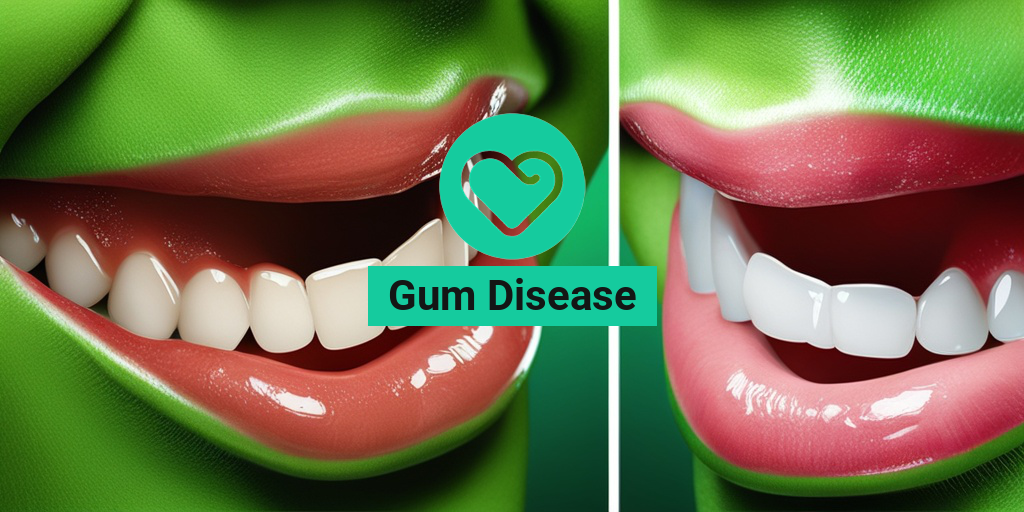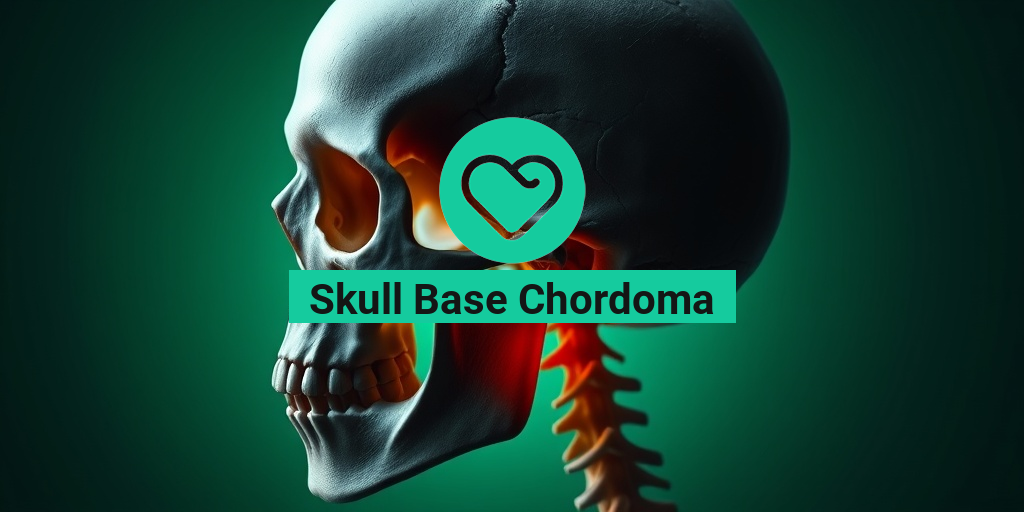“`html
What Is Gum Disease?
Gum disease, also known as periodontal disease, is a common yet serious condition that affects the gums and the structures supporting your teeth. It begins with the accumulation of plaque, a sticky film of bacteria that forms on your teeth. If not removed through regular brushing and flossing, plaque can harden into tartar, leading to inflammation and infection of the gums.
The Stages of Gum Disease
Gum disease typically progresses through several stages:
- Gingivitis: This is the earliest stage of gum disease, characterized by red, swollen gums that may bleed during brushing or flossing. At this stage, the condition is usually reversible with good oral hygiene.
- Periodontitis: If gingivitis is left untreated, it can advance to periodontitis. This stage involves deeper gum inflammation and can lead to the loss of supporting bone structure around the teeth. Symptoms may include persistent bad breath, gum recession, and pockets forming between the teeth and gums.
- Advanced Periodontitis: In this final stage, the damage is more severe, and tooth loss may occur. The gums may pull away significantly from the teeth, and the risk of systemic health issues increases.
Causes of Gum Disease
Understanding the causes of gum disease is crucial for prevention. Some common factors include:
- Poor Oral Hygiene: Inadequate brushing and flossing allow plaque to build up.
- Tobacco Use: Smoking or chewing tobacco can impair gum health.
- Hormonal Changes: Changes during puberty, menstruation, pregnancy, and menopause can make gums more sensitive.
- Medical Conditions: Diseases like diabetes and autoimmune disorders can affect gum health.
- Genetics: A family history of gum disease can increase your risk.
Gum Disease Symptoms
Recognizing the symptoms of gum disease early can help you seek treatment before it progresses. Here are some common signs to watch for:
Common Symptoms
- Swollen or Red Gums: Healthy gums should be firm and pink. If your gums are swollen or red, it may indicate inflammation.
- Bleeding Gums: If your gums bleed when you brush or floss, this is a significant warning sign of gum disease.
- Persistent Bad Breath: Halitosis can be a result of bacteria in the mouth associated with gum disease.
- Receding Gums: If your gums are pulling away from your teeth, exposing more of the tooth or its root, this is a concerning symptom.
- Loose Teeth: As gum disease progresses, it can lead to tooth mobility due to loss of supporting bone.
When to See a Doctor
If you notice any of these symptoms, it’s essential to consult a gum disease doctor or a dentist as soon as possible. Early intervention can prevent further complications and help maintain your oral health.
Conclusion
Gum disease is a prevalent condition that can have serious implications for your overall health. By understanding what gum disease is and recognizing its symptoms, you can take proactive steps to protect your gums. Regular dental check-ups, good oral hygiene practices, and a healthy lifestyle are key to preventing gum disease.
For more information on gum disease and other health-related topics, consider visiting Yesil Health AI, a valuable resource for evidence-based health answers. Remember, your oral health is an integral part of your overall well-being! 🦷✨
“`

“`html
Gum Disease Causes
Gum disease, also known as periodontal disease, is a common condition that affects many individuals worldwide. Understanding the causes of gum disease is crucial for prevention and effective treatment. Let’s explore the primary factors that contribute to this oral health issue.
Plaque Buildup
The most significant cause of gum disease is the accumulation of plaque—a sticky film of bacteria that forms on your teeth. If not removed through regular brushing and flossing, plaque can harden into tartar, which can only be removed by a dental professional. This buildup can lead to inflammation of the gums, known as gingivitis, which is the first stage of gum disease.
Smoking and Tobacco Use
Smoking is a major risk factor for gum disease. The chemicals in tobacco can weaken your gums and make it harder for them to heal. Smokers are more likely to develop gum disease than non-smokers, and they may also experience more severe forms of the disease.
Hormonal Changes
Hormonal fluctuations, particularly in women, can increase the sensitivity of gums. Conditions such as pregnancy, menstruation, and menopause can lead to increased gum inflammation and a higher risk of gum disease. It’s essential for women to maintain good oral hygiene during these times.
Medical Conditions
Certain medical conditions can also contribute to the development of gum disease. For instance:
- Diabetes: High blood sugar levels can impair blood flow to the gums and reduce their ability to fight infections.
- Autoimmune Diseases: Conditions like rheumatoid arthritis can affect the body’s ability to heal, making gum disease more likely.
- Heart Disease: There is a link between gum disease and heart disease, as inflammation in the gums can affect overall cardiovascular health.
Poor Nutrition
A diet lacking essential nutrients can weaken your immune system and make it harder for your body to fight off infections, including those affecting your gums. A deficiency in vitamins, particularly Vitamin C, can lead to gum disease as it plays a vital role in maintaining healthy gums.
Genetics
Your genetic makeup can also play a role in your susceptibility to gum disease. If you have a family history of periodontal disease, you may be at a higher risk. Understanding your family history can help you take proactive steps in maintaining your oral health.
Gum Disease Risk Factors
In addition to the causes of gum disease, several risk factors can increase your likelihood of developing this condition. Being aware of these factors can help you take preventive measures.
Age
As we age, the risk of gum disease increases. Older adults may experience more gum recession and bone loss, making them more susceptible to periodontal issues. Regular dental check-ups become increasingly important as you age.
Poor Oral Hygiene
Neglecting oral hygiene practices such as brushing twice a day and flossing daily can lead to plaque buildup and, ultimately, gum disease. Establishing a consistent oral care routine is essential for maintaining healthy gums.
Stress
Chronic stress can negatively impact your immune system, making it harder for your body to fight off infections, including those affecting your gums. Finding effective stress management techniques can be beneficial for your overall health.
Medications
Certain medications can affect your oral health by reducing saliva flow or causing gum overgrowth. Medications for conditions like epilepsy, hypertension, and some antihistamines can contribute to gum disease. If you’re concerned about your medications, consult your healthcare provider.
Unhealthy Lifestyle Choices
Unhealthy habits such as excessive alcohol consumption and poor diet can increase your risk of gum disease. A balanced diet rich in fruits, vegetables, and whole grains can support your oral health and overall well-being.
Family History
If you have a family history of gum disease, you may be at a higher risk. Understanding your genetic predisposition can help you take proactive steps to maintain your oral health, such as regular dental visits and improved oral hygiene practices.
By recognizing the causes and risk factors associated with gum disease, you can take proactive steps to protect your oral health. Regular dental check-ups, good oral hygiene, and a healthy lifestyle are key components in preventing this common condition. 🦷✨
“`

“`html
Gum Disease Diagnosis
Diagnosing gum disease is a crucial step in maintaining oral health. This condition, also known as periodontal disease, can lead to serious complications if left untreated. Understanding how gum disease is diagnosed can empower you to take proactive steps in your dental care.
Signs and Symptoms to Watch For
Recognizing the early signs of gum disease is essential. Here are some common symptoms:
- Swollen or red gums: Healthy gums should be pink and firm. If you notice any swelling or redness, it could be a sign of inflammation.
- Bleeding gums: If your gums bleed during brushing or flossing, this is a significant indicator of gum disease.
- Persistent bad breath: Halitosis can be a result of bacteria buildup in the mouth.
- Receding gums: If your gums appear to be pulling away from your teeth, this could indicate gum disease.
- Loose teeth: Advanced gum disease can lead to tooth mobility due to the loss of supporting bone.
Professional Diagnosis
If you suspect you have gum disease, it’s important to visit a gum disease doctor, typically a dentist or periodontist. During your appointment, the following diagnostic methods may be employed:
- Visual examination: Your dentist will visually inspect your gums and teeth for signs of gum disease.
- Periodontal probing: A small instrument is used to measure the depth of the pockets between your gums and teeth. Deeper pockets can indicate more severe gum disease.
- X-rays: Dental X-rays may be taken to assess the bone level around your teeth and determine if there is any bone loss.
Early diagnosis is key to effective treatment, so don’t hesitate to seek professional help if you notice any symptoms of gum disease. 🦷
Gum Disease Treatment Options
Once diagnosed, there are various gum disease treatment options available, depending on the severity of the condition. Treatment can range from non-invasive methods to surgical procedures. Here’s a breakdown of the most common approaches:
Non-Surgical Treatments
For early-stage gum disease, non-surgical treatments can be very effective:
- Professional cleaning: Also known as scaling and root planing, this procedure involves removing plaque and tartar from above and below the gum line.
- Antibiotic treatments: Your dentist may prescribe topical or oral antibiotics to help control bacterial infection.
- Improved oral hygiene: Regular brushing, flossing, and using gum disease mouthwash can significantly improve your gum health.
Surgical Treatments
If gum disease has progressed to a more severe stage, surgical options may be necessary:
- Flap surgery: This procedure involves lifting back the gums to remove tartar and then suturing them back in place for a tighter fit.
- Bone grafting: If bone loss has occurred, bone grafting can help regenerate lost bone and support the teeth.
- Tissue grafts: This involves taking tissue from another part of your mouth and attaching it to the affected area to help restore gum tissue.
At-Home Care and Prevention
In addition to professional treatments, maintaining good oral hygiene at home is vital for preventing gum disease:
- Use fluoride toothpaste: Look for toothpaste specifically designed for gum health.
- Regular brushing and flossing: Brush at least twice a day and floss daily to remove plaque.
- Consider special mouthwashes: Some mouthwashes are formulated to help reduce plaque and gingivitis.
By understanding the diagnosis and treatment options for gum disease, you can take charge of your oral health and prevent further complications. Remember, early intervention is key! 🌟
“`

“`html
Gum Disease Prevention Tips
Gum disease, also known as periodontal disease, is a common yet serious condition that affects the gums and can lead to tooth loss if left untreated. Fortunately, there are several effective strategies to prevent gum disease and maintain optimal oral health. Here are some essential gum disease prevention tips that everyone should follow:
1. Maintain a Consistent Oral Hygiene Routine
One of the most effective ways to prevent gum disease is to practice good oral hygiene. This includes:
- Brushing your teeth at least twice a day with fluoride toothpaste.
- Flossing daily to remove plaque and food particles from between your teeth.
- Using an antimicrobial mouthwash to help reduce plaque and bacteria.
2. Regular Dental Check-ups
Visiting your dentist regularly for check-ups and cleanings is crucial. Dentists can identify early signs of gum disease and provide professional cleanings to remove tartar buildup that regular brushing cannot eliminate. Aim for a dental visit every six months, or more frequently if recommended by your dentist.
3. Eat a Balanced Diet
Your diet plays a significant role in your oral health. Incorporate foods rich in vitamins and minerals, particularly:
- Vitamin C – Helps maintain healthy gums.
- Calcium – Essential for strong teeth and bones.
- Omega-3 fatty acids – May help reduce inflammation in the gums.
Limit sugary snacks and beverages, as they can contribute to plaque buildup and gum disease.
4. Avoid Tobacco Products
Smoking and using tobacco products significantly increase the risk of gum disease. If you currently smoke, consider seeking help to quit. Your gums will thank you! 🚭
5. Manage Stress
Stress can negatively impact your immune system, making it harder for your body to fight off infections, including gum disease. Engage in stress-reducing activities such as exercise, meditation, or hobbies that you enjoy.
6. Stay Hydrated
Drinking plenty of water helps wash away food particles and bacteria in your mouth. Staying hydrated also promotes saliva production, which is essential for neutralizing acids and protecting your gums.
Gum Disease and Overall Health
Did you know that gum disease can have far-reaching effects beyond your mouth? Research has shown a strong connection between oral health and overall health. Here’s how gum disease can impact your body:
1. Heart Health
Studies suggest that individuals with gum disease may be at a higher risk for heart disease. The inflammation caused by gum disease can contribute to the buildup of plaque in the arteries, leading to cardiovascular issues. ❤️
2. Diabetes Connection
There is a bidirectional relationship between gum disease and diabetes. People with diabetes are more susceptible to infections, including gum disease, while gum disease can make it more challenging to control blood sugar levels. Managing your oral health is crucial if you have diabetes.
3. Respiratory Issues
Inhaling bacteria from infected gums can lead to respiratory infections and complications, particularly in individuals with pre-existing lung conditions. Maintaining healthy gums can help reduce this risk.
4. Pregnancy Complications
Pregnant women with gum disease may face increased risks of premature birth and low birth weight. Hormonal changes during pregnancy can make gums more susceptible to inflammation, making it essential for expectant mothers to prioritize oral health.
5. Link to Other Conditions
Emerging research suggests that gum disease may be linked to other health conditions, including:
- Alzheimer’s disease – Some studies indicate a potential connection between gum disease and cognitive decline.
- Rheumatoid arthritis – Inflammation in the gums may exacerbate symptoms of this autoimmune disease.
In conclusion, maintaining good oral hygiene and understanding the implications of gum disease on overall health is vital. By following preventive measures and staying informed, you can protect your gums and enhance your overall well-being. 🦷✨
“`

“`html
Frequently Asked Questions about Gum Disease
What is gum disease?
Gum disease, also known as periodontal disease, is an infection of the tissues that surround and support your teeth. It is primarily caused by poor oral hygiene that allows plaque—a sticky film of bacteria—to build up on teeth and harden.
What are the symptoms of gum disease?
Common gum disease symptoms include:
- Swollen or bleeding gums
- Persistent bad breath
- Receding gums
- Loose teeth
- Changes in bite or tooth alignment
What causes gum disease?
The main causes of gum disease include:
- Poor oral hygiene
- Tobacco use
- Genetic predisposition
- Hormonal changes (e.g., pregnancy, menopause)
- Certain medical conditions (e.g., diabetes)
How is gum disease treated?
Treatment for gum disease varies depending on its severity. Options may include:
- Professional dental cleaning
- Scaling and root planing
- Antibiotics
- Surgical procedures for advanced cases
Can gum disease affect my overall health?
Yes, studies have shown that gum disease can be linked to other health issues, including heart disease, diabetes, and respiratory problems. Maintaining good oral health is essential for overall well-being.
Is there a specific mouthwash for gum disease?
Yes, there are gum disease mouthwash options available that contain antibacterial ingredients to help reduce plaque and inflammation. Look for products containing chlorhexidine or essential oils.
Can dogs get gum disease?
Yes, gum disease in dogs is a common issue. Regular dental check-ups and cleanings are important for maintaining your pet’s oral health.
What toothpaste is best for gum disease?
Look for gum disease toothpaste that contains fluoride and antibacterial agents. Some brands specifically target gum health and can help reduce plaque buildup.
How can I prevent gum disease?
Preventing gum disease involves:
- Brushing your teeth at least twice a day
- Flossing daily
- Regular dental check-ups
- Avoiding tobacco products
- Eating a balanced diet
When should I see a doctor for gum disease?
If you notice any symptoms of gum disease, such as bleeding gums or persistent bad breath, it is important to consult a gum disease doctor or dentist as soon as possible for evaluation and treatment.
“`




